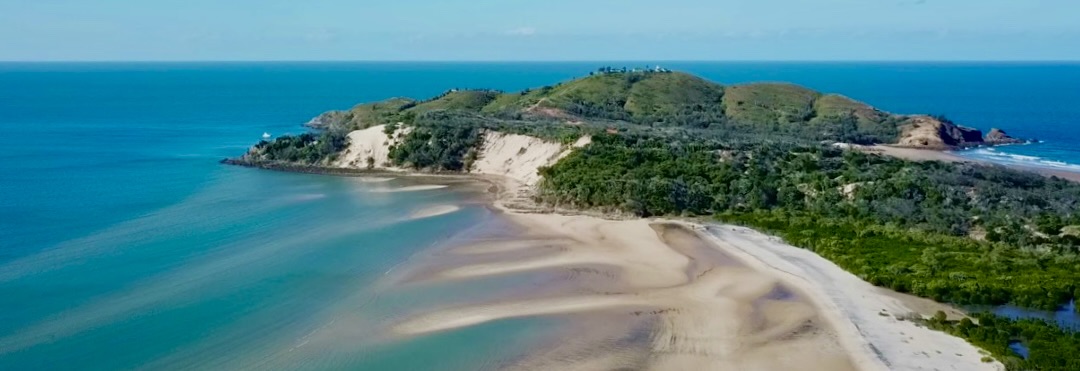
Location:
Cape Capricorn Lighthouse is located on the north eastern tip of Curtis Island which is 39 km north east of the port of Gladstone. Due to it’s inaccessibility and the fact the current lighthouse is the third generation of lighthouse in this location I didn’t visit this lighthouse and the commentary and photos below are from other sources.
GPS: Lat: 23° 29’ S : Long: 151° 14’ E
First Lit: 1875 (rebuilt in 1936 and agin in 1964; automated 1987)
Tower height: 7m, Elevation 93m
Original Lens: 2nd Order Chance Bros. Dioptric
Range: 17nml (31km)
Characteristic: One white flashes every five seconds: [Fl W 5s with ared sector]
History:
Plans for a lighthouse and cottages were prepared in early 1874 by the office of F. D. G. Stanley, Queensland Colonial Architect, with an estimated cost of £ 1,460 for the lighthouse and cottages. The lighthouse, a typical Queensland timber-framed and iron clad structure, was to be prefabricated and built in Brisbane. However, the only response to the first tender was an overpriced offer of £ 2,850. The second tender was more successful, the winning offer being by James Midson for £ 1,046. The construction was completed in October 1874, and an additional contract was granted to Midson for the erection of the structures on the site for the sum of £ 753. Quite remarkably, a last minute change in the order of the lantern from England meant that no lamp room was ordered. An urgent request for an additional £ 180 was made by Stanley for construction of a lamp room from timber framing with iron plating, instead of the planned cast iron one. The lighthouse was operational in late July 1875. The original light source was an oil wick burner. An 1895 survey also reports two additional auxiliary lights on Cape Capricorn, to the north and southeast of the main lighthouse.completion until November 1878.

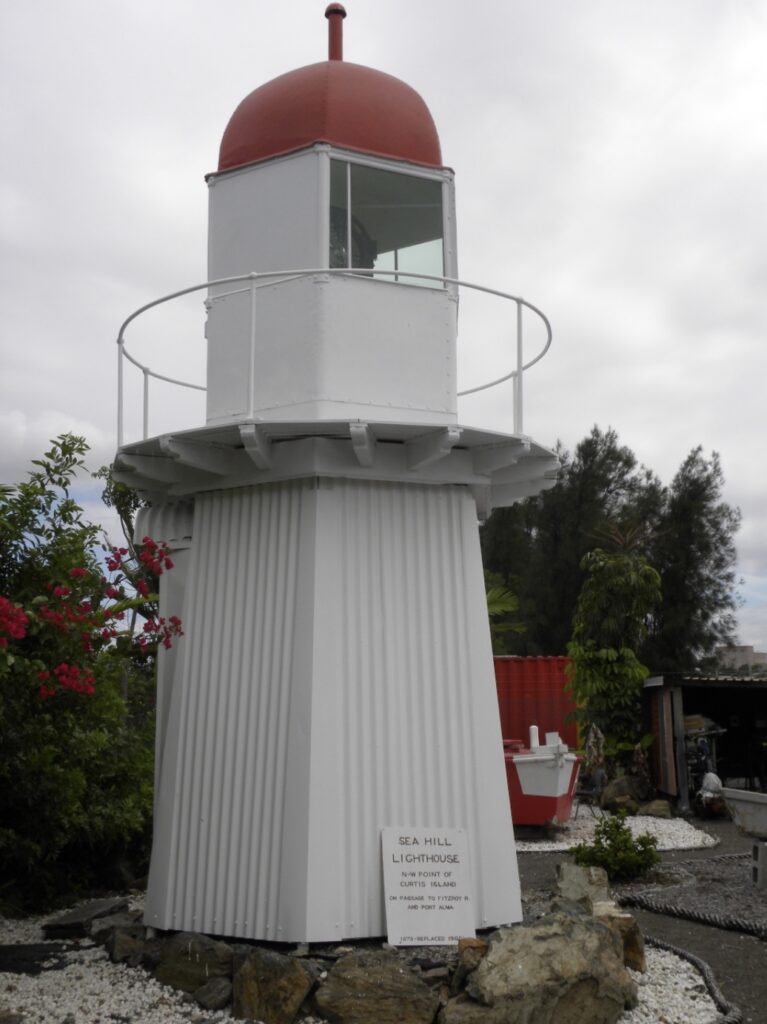

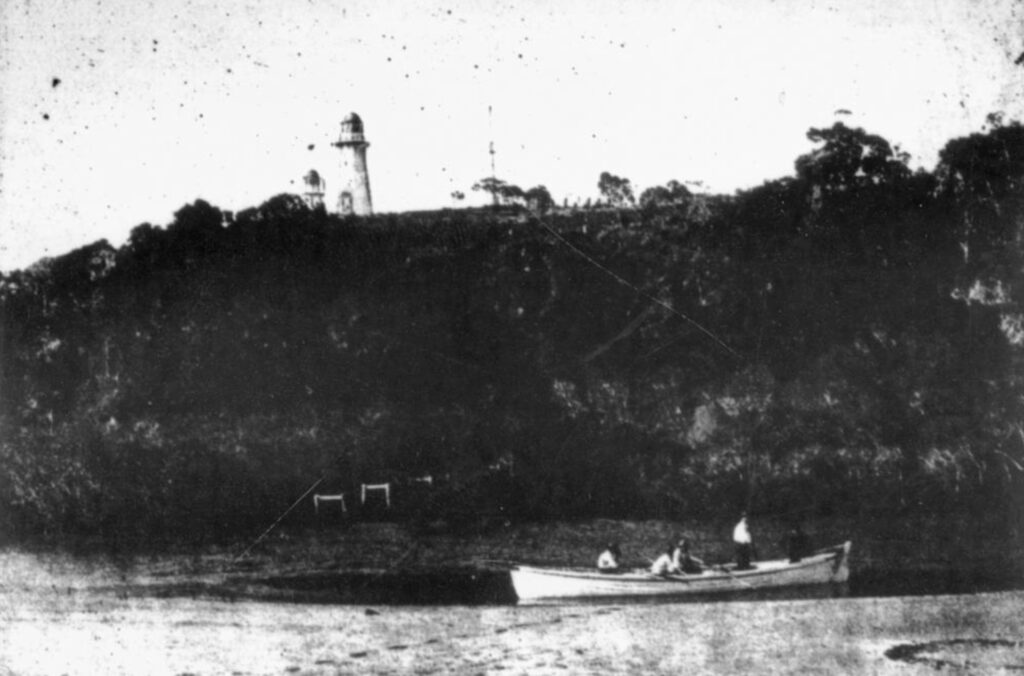
The Original Lighthouse:
The lighthouse was constructed on a migratory patch of sand inside a fringing coral reef, which over the years disappeared and reappeared, as sand was washed away and accumulated, and is now a vegetated sandy island. Its construction is unique, having a hollow concrete base that both gives it resistance to the shifting nature of the sandbar and serves as a freshwater tank. As such, it is considered one of the major achievement in Australian lighthouse construction. It is also notable in that due to the harsh conditions, only bachelors were allowed to serve as lighthouse keepers. At 24 metres (79 ft) it is also the tallest of Queensland’s timber-framed iron clad lighthouses.

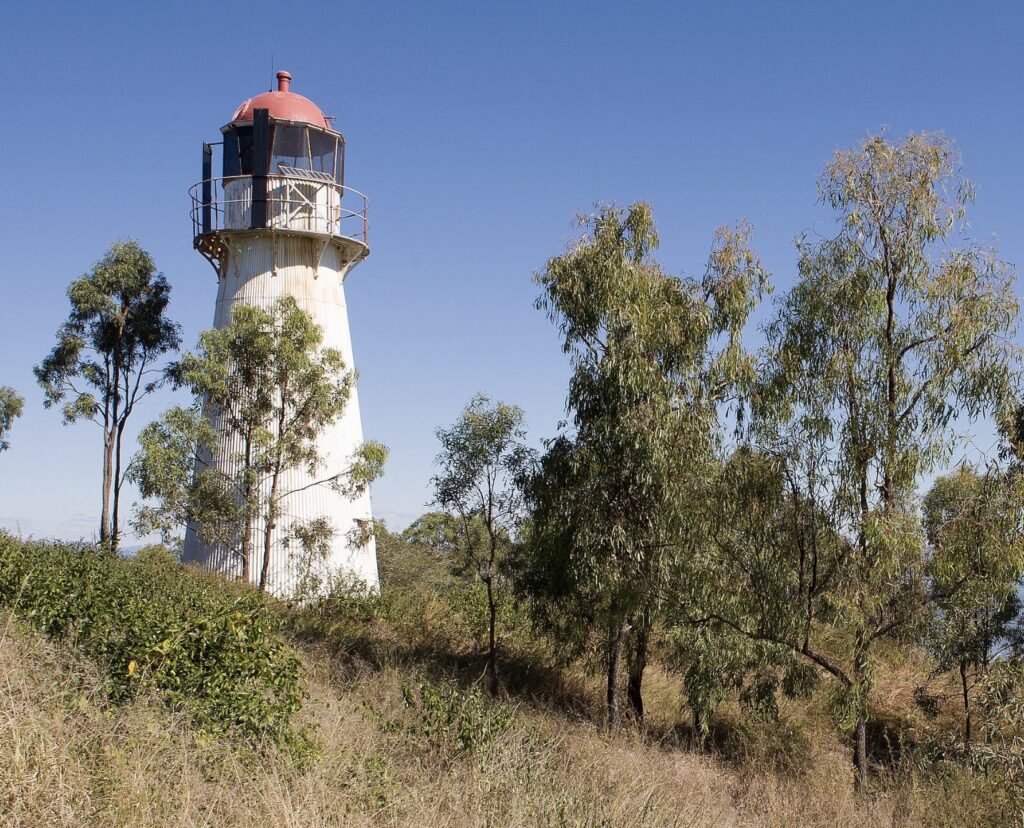
The Second lighthouse
In 1936 the Commonwealth government decided to replace the tower with a new concrete block lighthouse, and plans were prepared in September 1937.[5]


The new tower was a 6-metre-high (20 ft) square structure, with an adjoined powerhouse. The tower was topped by a cantilevered circular balcony and a small circular lantern. At the same time the residences and service buildings were also replaced with timber-framed asbestos clad structures. The new lighthouse was made operative with electric power in 1938. However, from undetermined reasons this lighthouse was to be short-lived, surviving only 26 years more to be replaced by a new structure in 1964.
The Third lighthouse:
Plans for a new powerhouse and lighthouse were made in January 1962 and July 1963 respectively. By 1964 construction was complete and the new light was operational. The base of the tower, 13 metres (43 ft) in diameter and 4.6 metres (15 ft) high, was constructed of bolted cast iron segments and it was the first of a group of seven concrete towers erected between 1964 and 1979, followed by New Caloundra Light, Point Danger Light, New Burnett Heads Light, Fitzroy Island Light, Point Cartwright Light and Archer Point Light. In 1968 the light source was converted to 240 V AC operation.


Since its construction and until 1978, Cape Capricorn lightstation served as the base radio station for a network of lighthouses in the area including North Reef Light, Lady Elliot Island Light, Pine Islet Light and Dent Island Light. On 18 December 1978 this role was transferred to Bustard Head Light.
On 8 December 1983, the House Standing Committee on Expenditure tabled its report on the inquiry into lightstations entitled “Lighthouses: Do we keep the keepers?”. The report recommended the demanning of 24 lightstation, including Cape Capricorn. In 1988 the station was finally converted to solar power (and presumably demanned). The lantern has been removed, and a self-contained beacon was installed.
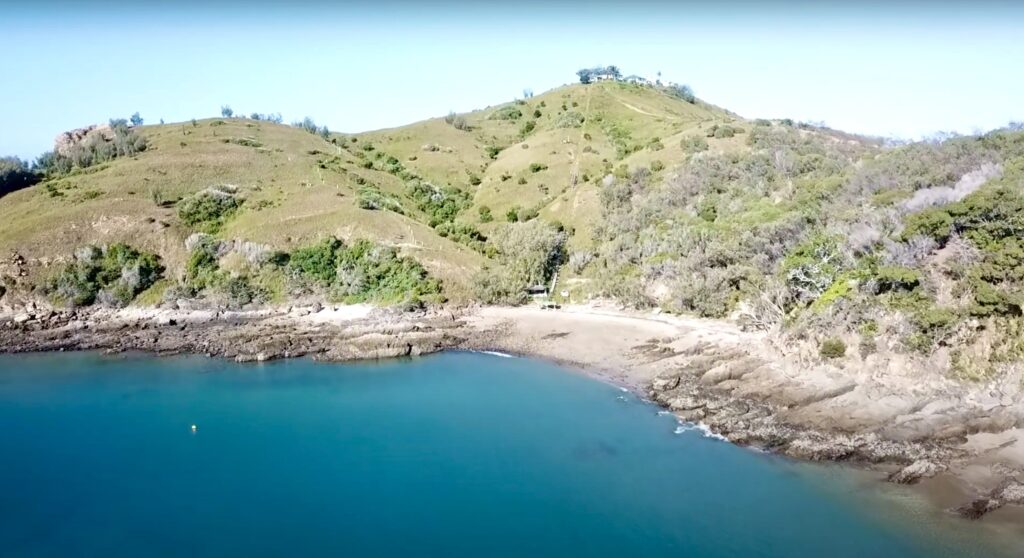
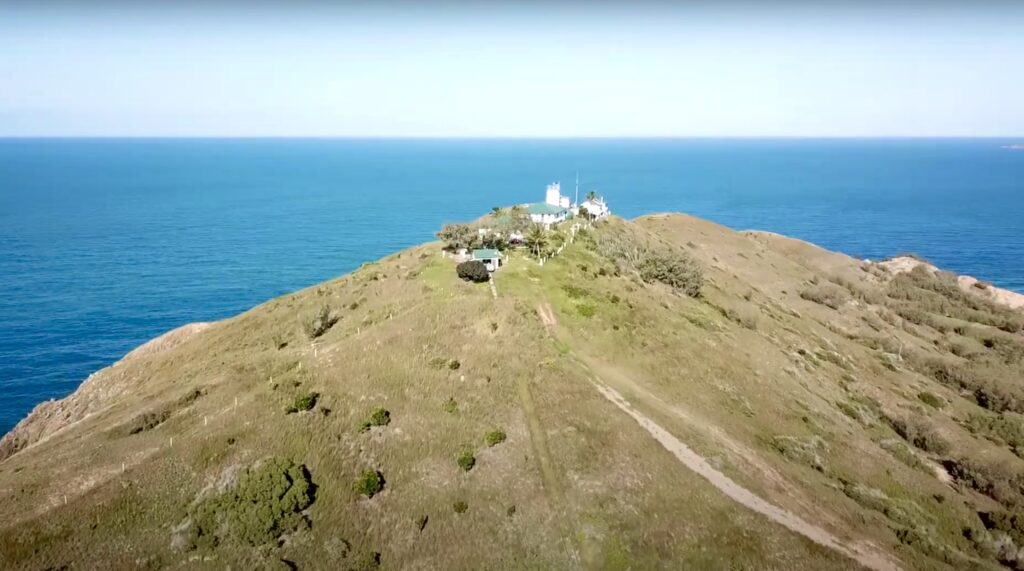
Current Status:
Ownership of the station was transferred to the Great Barrier Reef Marine Park Authority in 1991, and then back to the Australian Maritime Safety Authority (AMSA) in 1995 and finally to the Queensland Government in July 1997, who employ a caretaker at one of the residences. Cape Capricorn lighthouse is operated by the Australian Maritime Safety Authority (AMSA).